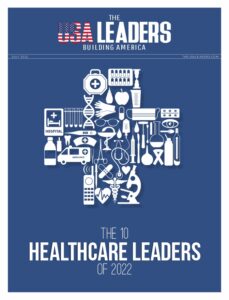The concept of wellness has significantly evolved over the years, moving beyond mere physical health to comprise mental, emotional, and overall well-being. Today, with the rise of technology and increased awareness about health, new wellness trends continue to emerge, making self-care more accessible and varied than ever before. These trends reflect a shift towards preventative health measures and a more holistic approach to managing one’s health. Whether it’s through digital solutions, diet changes, or innovative workout routines, there’s something for everyone in the realm of wellness today. In this blog, we will share the top wellness trends that are reshaping how we think about health and well-being in the most practical and accessible ways.
1. Mindfulness and Meditation Apps
In our fast-paced world, mindfulness and meditation apps have become a necessity for those seeking a moment of peace amidst the chaos. These tools offer guided sessions that can help users reduce stress, improve concentration, and enhance their overall mental health. There are numerous apps that provide a variety of meditation options, ranging from quick, daily routines to longer sessions aimed at deep relaxation.
2. Supplements for That Extra Kick
In the quest for optimal health, many turn to supplements that have well-documented benefits. Common supplements like vitamin C for immune support, magnesium for muscle and nerve function, and calcium for bone health are integral to many wellness routines. These nutrients not only contribute to daily health maintenance but can also enhance overall well-being by preventing various deficiencies that affect body function.
Here, it is important to mention specialized products like Selective Androgen Receptor Modulators (SARMs), which are widely available in the market. These compounds are known for their purported potential to positively influence muscle and bone health without the severe side effects associated with traditional steroids. One popular combination is the RAD-140 and Cardarine Stack, commonly offered by suppliers such as Sports Technology Labs. However, it’s important to remember that SARMs are primarily research chemicals. Although they are frequently employed in research, their safety and efficacy for human consumption are still under evaluation.
Therefore, to steer clear of any confusion concerning supplements, it’s advisable to seek guidance from a doctor or an expert beforehand.
3. The Rise of Telehealth
Telehealth has revolutionized the way we access medical care. What once required a visit to a doctor’s office can now often be handled from the comfort of one’s home. This trend gained significant traction during recent global health events, showcasing its potential to maintain continuity of care even in challenging circumstances. It has expanded the range of services available remotely, from routine check-ups to mental health sessions. Moreover, many patients appreciate the convenience and cost savings of telehealth, making healthcare more accessible to those in remote or underserved areas.
4. Wearable Health Technology
Wearable technology has become a game-changer in personal health monitoring. Devices like fitness trackers, smartwatches, and even smart rings can track a plethora of health metrics such as steps, heart rate, sleep quality, and even stress levels. This constant stream of data not only helps users stay informed about their health but also motivates them to lead more active lifestyles. The real-time feedback provided by these devices allows for immediate adjustments in routine if certain metrics fall below personal goals, making them a valuable partner in the pursuit of health and wellness.
5. High-Intensity Interval Training (HIIT)
High-Intensity Interval Training, or HIIT, remains a top choice for people who want workouts that are both effective and efficient. It involves intense but short bursts of exercise followed by short breaks or less intense activity. You can do HIIT workouts just about anywhere—like at the gym or in your living room—and you usually don’t need a lot of equipment. The great thing about HIIT is that it can improve your heart health and help you burn calories quickly, which is perfect if you’re too busy for longer workout sessions. This makes it a practical option for those who struggle to find time for exercise.
6. Plant-Based Diets
The shift towards plant-based diets is more than just a dietary change; it’s a lifestyle revolution. Encouraged by evidence of its health benefits and lower environmental impact, more people are choosing plant-based options. This diet is not only about eliminating animal products but also about embracing an abundance of fruits, vegetables, grains, and legumes. Such changes have been linked to lower risks of heart disease, hypertension, diabetes, and various types of cancer. Restaurants and supermarkets are increasingly accommodating this shift, making it easier for individuals to maintain such diets without compromising on variety or taste.
7. Holistic Health Retreats
As people seek more comprehensive health solutions, holistic health retreats have become increasingly popular. These retreats offer a blend of physical activities, nutritional food, mindfulness practices, and therapeutic treatments, all designed to improve overall well-being. They provide a unique opportunity to step away from the daily grind and focus solely on health and relaxation in serene environments. The immersive experience is tailored to foster personal growth, healing, and connection with nature, providing participants with tools to continue a healthier lifestyle even after they return home.
8. Sustainable Fitness Practices
Sustainable fitness practices have emerged as a response to environmental concerns and the wellness community’s desire to reduce its carbon footprint. This trend includes using eco-friendly workout gear, participating in outdoor activities that require minimal equipment, and choosing gyms that prioritize sustainability in their operations. The focus is on maintaining physical fitness while also caring for the planet, aligning personal health goals with environmental values.
9. Adaptogens and Superfoods
The use of adaptogens and superfoods has become a focal point for those looking to naturally improve their health. Adaptogens are herbs that are reputed to help the body resist stressors of all kinds, whether physical, chemical, or biological. Superfoods are foods that are particularly rich in nutrients and antioxidants, offering significant health benefits. Integrating these into daily diets can help support the immune system, reduce inflammation, and improve energy levels, making them a popular choice for health-conscious individuals. If you’re looking for an easy way to incorporate mindful relaxation into your self-care routine, check out Flowerz mini pre rolls for a discreet and convenient option.”
10. Mental Health Awareness
Perhaps one of the most significant wellness trends is the increasing awareness and acceptance of mental health issues. There is a growing movement towards destigmatizing mental health conditions and promoting open discussions about mental well-being. This shift is reflected in the greater availability of mental health resources, such as online platforms for therapy, public talks, and workshops that aim to educate and offer support. As mental health becomes a regular part of the wellness conversation, more individuals are encouraged to seek help and support when needed.
Conclusion
The wellness industry continues to evolve, bringing forth innovative trends that cater to the diverse needs of the global population. From the integration of technology in health monitoring to the embrace of mental health awareness, each trend offers unique avenues to support and improve well-being. As we move forward, it’s essential for everyone to explore these trends and discover what aligns best with their health objectives and lifestyle. The path to wellness is personal, and finding the right balance is key to achieving long-lasting health benefits. By keeping informed about these trends, individuals can make empowered choices that lead to a healthier, more fulfilled life.
Also Read: A Healthier High: How THC Seltzers Are Changing the Landscape of Social Drinking






















